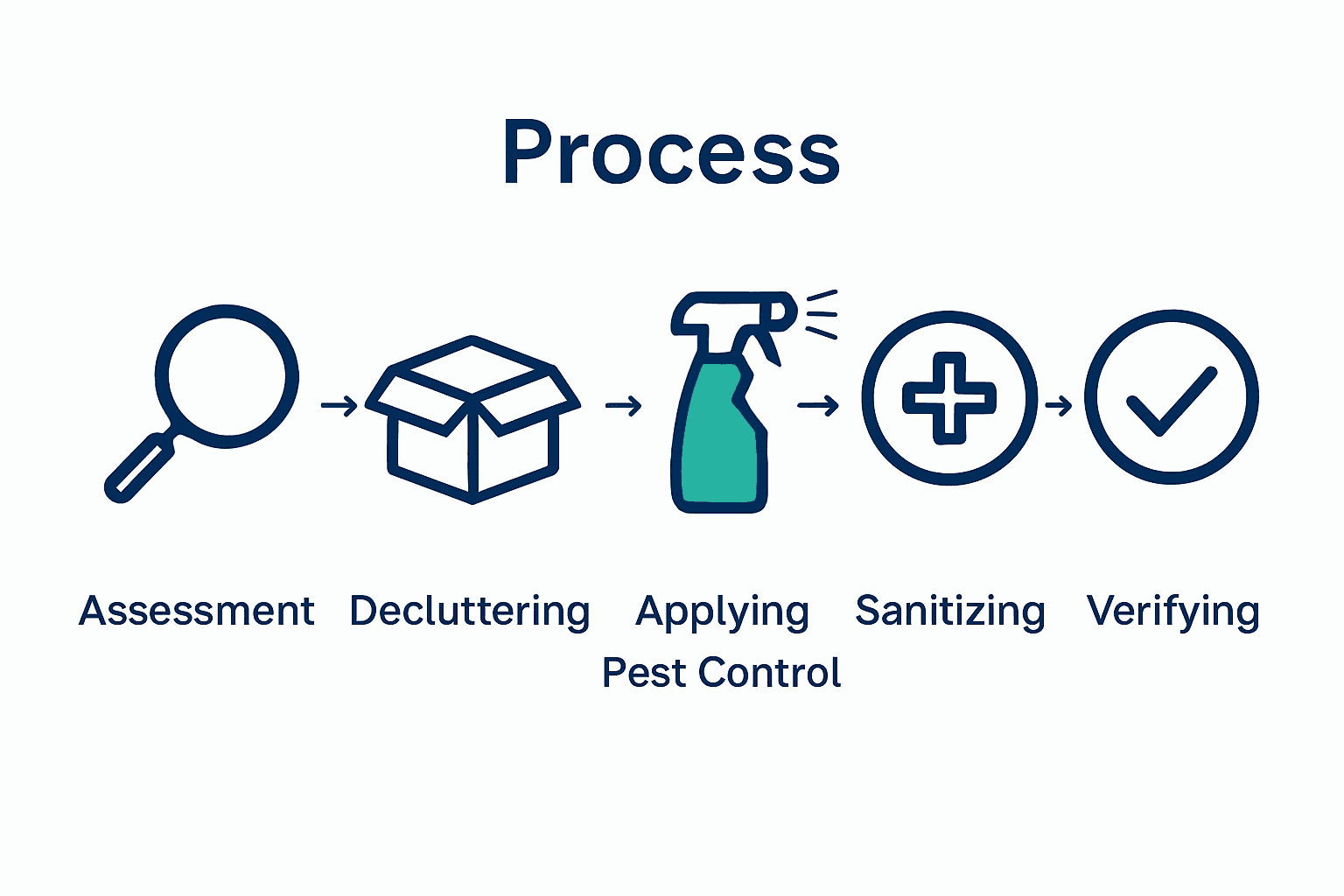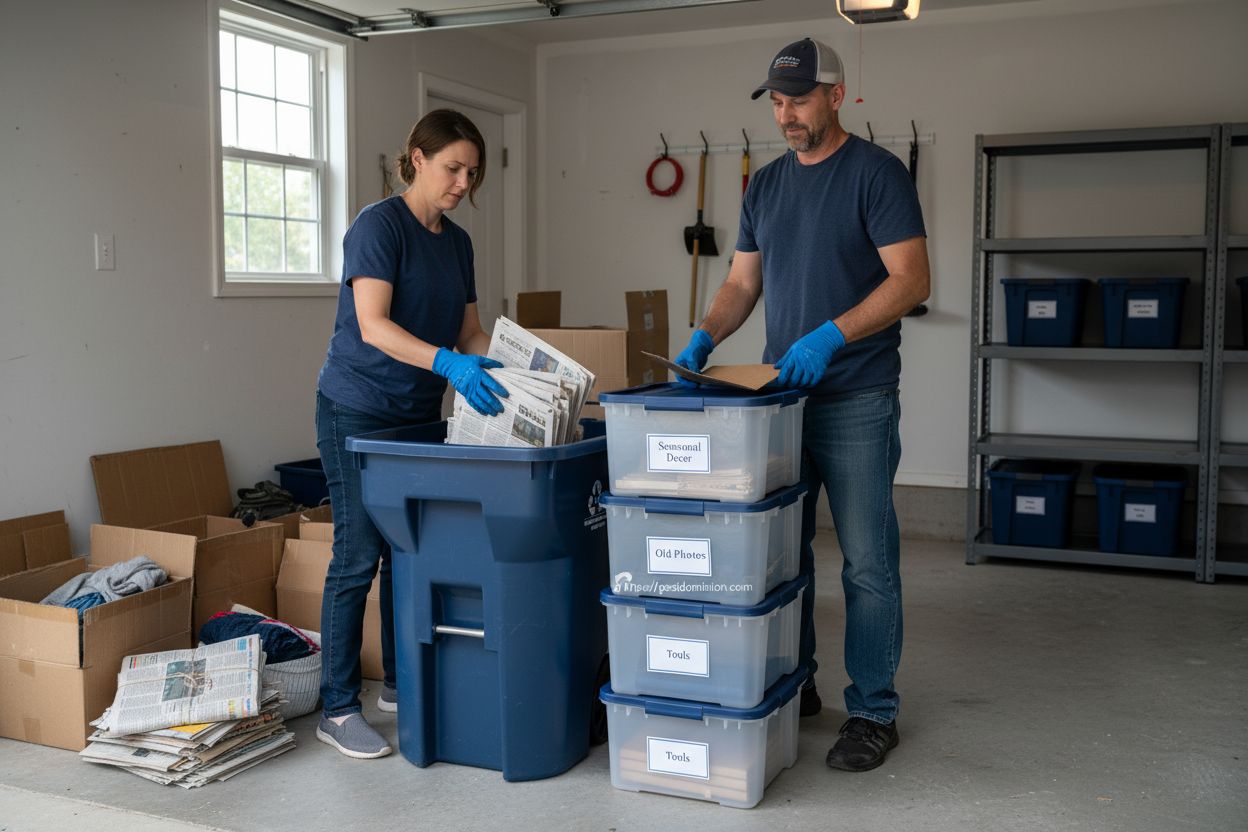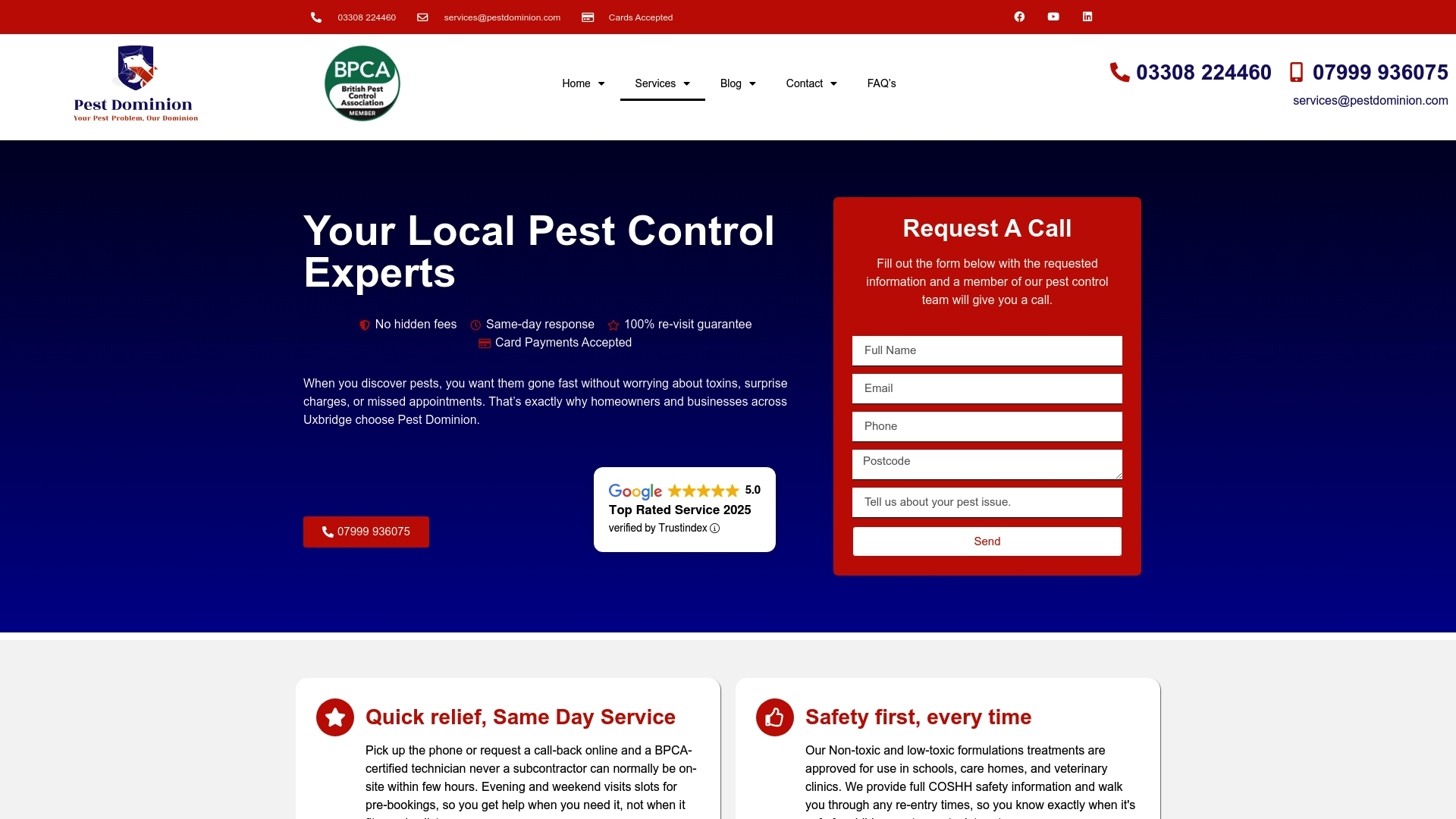Did you know that one in five UK homes experiences a pest infestation each year? Unwanted guests like rodents and insects can damage property, threaten health, and disrupt daily life. A proactive approach saves time and money while reducing stress. By understanding the crucial steps of inspection, cleanup, and targeted action, you can turn your home into a pest-free zone and guard against future problems.
Quick Summary
| Key Point | Explanation |
|---|---|
| 1. Assess infestation promptly | Identify signs of pests like droppings and damage before treatment for effective management. |
| 2. Remove clutter to deter pests | Declutter areas to minimize hiding spots and breeding grounds for pests in your home. |
| 3. Use approved pest control products | Apply targeted, professional-grade pest control products to effectively eliminate identified pests. |
| 4. Disinfect thoroughly after cleaning | Ensure all surfaces are sanitized to eliminate pest breeding grounds and prevent reinfestation. |
| 5. Verify and monitor pest activity | Continuously check for signs of pests to confirm treatment success and determine if further measures are needed. |

Table of Contents
- Step 1: Assess Infestation And Secure Affected Areas
- Step 2: Remove Clutter And Potential Hiding Spots
- Step 3: Clean With Approved Pest Control Products
- Step 4: Disinfect Surfaces Safely And Thoroughly
- Step 5: Verify Pest Activity And Repeat If Necessary
Step 1: Assess infestation and secure affected areas
In this crucial first step, you will systematically identify whether you are dealing with a potential pest problem and take immediate protective measures. Your goal is to understand the extent and nature of the infestation before any treatment begins.
Starting your assessment requires careful observation and a structured approach. According to the National Residential Landlords Association, a thorough inspection of your premises is fundamental to accurately identifying affected areas. Begin by walking through each room methodically, looking for telltale signs of pest activity.
What exactly should you look for? Shelter England provides clear guidance on recognising infestation markers. Key indicators include finding multiple droppings, noticing unexplained damage to surfaces or materials, detecting unusual odours, and witnessing multiple pest sightings. Remember that isolated incidents might not represent a full infestation – large numbers are the real warning sign.
During your assessment, pay special attention to potential entry points and hiding spaces. Check areas like kitchen cabinets, behind appliances, wall corners, and dark storage spaces. Look for gnaw marks, tracks, nesting materials, or unusual debris that might suggest pest presence.
Pro Tip: Use a flashlight and wear protective gloves during your initial inspection to ensure thorough and safe investigation.
Immediately after identifying potential problem areas, secure these spaces to prevent further spread or damage. This means sealing potential entry points, removing accessible food sources, and minimising moisture which attracts pests. Read our guide on comprehensive pest prevention for more detailed strategies.
Once you have completed your assessment, you will be ready to document your findings and prepare for the next critical step: professional intervention.
Here’s a comparison of the main pest control preparation steps:
| Step | Main Action | Key Focus Areas |
|---|---|---|
| Assess & Secure | Inspect & isolate | Entry points Kitchens Storage |
| Remove Clutter | Clear hiding spots | Garages Attics Pantries |
| Clean with Pest Controls | Apply approved treatments | Problem areas Pest habitats |
| Disinfect Surfaces | Sanitise thoroughly | High-traffic zones Food areas |
| Verify & Repeat | Inspect and monitor results | Treated sites Entry points |
Step 2: Remove clutter and potential hiding spots
In this critical step, you will systematically eliminate potential pest hiding spaces and create an environment that minimises opportunities for infestation. By strategically decluttering and reorganising your space, you will significantly reduce risks and make future pest management easier.
According to The Pied Piper, hoarded or cluttered environments provide perfect conditions for pests like rodents, cockroaches, flies, and bed bugs to go unnoticed. These hidden spaces become breeding grounds and safe havens for unwanted visitors. Your mission is to disrupt these potential sanctuaries and expose any existing pest activity.
Start by clearing out unnecessary papers, cardboard boxes, and unused items. As Habitatista recommends, these materials are prime real estate for pests seeking shelter. Focus on areas like storage rooms, garages, attics, and kitchen pantries where clutter tends to accumulate. Remove stacks of newspapers, empty cardboard boxes, and old packaging materials which can harbour insects and rodents.
Transition your storage approach by replacing cardboard and paper containers with sealed plastic containers.
 These create a barrier against pests and make it easier to spot any signs of infestation. Consider investing in shelving units that keep items off the floor and allow for easier cleaning and inspection.
These create a barrier against pests and make it easier to spot any signs of infestation. Consider investing in shelving units that keep items off the floor and allow for easier cleaning and inspection.
Pro Tip: When decluttering, work systematically from one area to another to avoid spreading potential pest populations across different spaces.
Pay special attention to less frequented areas like basements, under sinks, and behind large appliances. These zones often become unintentional pest habitats. Move items away from walls, create clear spaces, and ensure good visibility and airflow.
Learn more about comprehensive pest prevention strategies to complement your decluttering efforts. Your next step will involve deep cleaning these newly cleared spaces to further discourage pest activity.
Step 3: Clean with approved pest control products
You will now strategically apply targeted cleaning and treatment methods using only professional grade and legally approved pest control products. This step is about precision treatment that eliminates pests while maintaining safety for your environment.
According to GOV.UK guidance, using pest control products requires strict adherence to specific protocols. Each product must be carefully selected for the exact type of pest you are targeting. This means no generic treatments or random applications – your approach needs to be deliberate and informed.
Before purchasing any product, carefully read the manufacturer instructions and verify its legal status in the UK. The National Residential Landlords Association warns that amateur pest control products must be applied with extreme care. Misusing these products or applying treatments without clear evidence of infestation could potentially breach regulatory standards.
Start by identifying the specific pest type you are dealing with. Different insects and rodents require different treatment approaches. Purchase products specifically designed for that particular pest and ensure they are approved for residential use. Look for professional grade solutions that offer targeted elimination while minimizing potential environmental impact.
Pro Tip: Always wear protective gloves and follow manufacturer instructions precisely to ensure safe and effective application.
When applying treatments, focus on identified problem areas from your previous assessment. Apply products methodically, covering potential entry points and known pest habitats. Ensure thorough coverage while avoiding over saturation which could reduce product effectiveness.
Discover our expert guide on maintaining cleanliness to prevent roach infestations for additional insights into comprehensive pest management. Your next step will involve monitoring and evaluating the effectiveness of these initial treatment efforts.
Step 4: Disinfect surfaces safely and thoroughly
In this crucial stage, you will transform your cleaned spaces into sanitised environments that eliminate potential pest breeding grounds and reduce future infestation risks. Your goal is to create a comprehensive barrier against pest reinvasion through strategic and thorough disinfection.
According to the UK Plant Health Information Portal, effective disinfection requires more than a simple spray. The key is preparing surfaces properly before applying any disinfectant. Organic matter significantly reduces disinfectant effectiveness, so your first task is ensuring surfaces are meticulously cleaned and free from debris.
Begin by selecting a disinfectant specifically suited to the surfaces and potential pest types you are addressing. Not all disinfectants work identically. Some are more effective against specific organisms, so choose wisely. Professional pest control providers recommend using food safe, non corrosive biocides that are approved for residential use.
A professional pest control provider suggests two primary application methods: fogging and direct spray. Fogging works well for comprehensive coverage in enclosed spaces, while spraying allows more targeted treatment. Whichever method you choose, ensure complete surface coverage without oversaturation.
Pro Tip: Always wear protective gloves and ensure proper ventilation during and after disinfection to maintain safety.
After application, keep treated areas closed for the recommended contact time to maximise effectiveness. Once the specified duration passes, thoroughly ventilate the space by opening windows and allowing fresh air to circulate. This helps eliminate any residual chemical odours and ensures a safe environment.
Explore our comprehensive guide to understanding pest control methods to complement your disinfection efforts. Your next step will involve implementing preventative measures to maintain your newly sanitised space.
Step 5: Verify pest activity and repeat if necessary
In this critical final stage, you will systematically assess the effectiveness of your pest control efforts and determine whether additional treatments are required. Your goal is to confirm that your previous interventions have successfully disrupted pest populations and prevented future reinfestation.
According to the National Residential Landlords Association, professional pest control begins with a thorough survey and continues with careful monitoring. This means you cannot simply assume your initial treatment worked – you must actively investigate and gather evidence of pest status.
Start by conducting a comprehensive inspection of previously treated areas. Look for signs of continued pest activity such as new droppings, gnaw marks, unusual sounds, or visible insect movement. Pay close attention to the specific areas you initially identified during your assessment phase. Use a flashlight and examine corners, crevices, and potential entry points meticulously.
As Shelter England recommends, your follow-up actions should directly relate to the cause and nature of the initial infestation. If structural issues or environmental conditions remain unchanged, pest problems are likely to recur. This might mean sealing additional entry points, addressing moisture problems, or removing potential food sources that attract pests.
Pro Tip: Document your findings with photographs and detailed notes to track progress and inform future treatments.
If you discover ongoing pest activity, do not panic. Repeat your treatment process with potentially increased intensity or consider consulting a professional pest control service for advanced intervention. Some infestations require multiple treatment cycles to completely eliminate the problem.
Learn more about keeping pests out naturally and effectively to complement your verification efforts. Remember that persistent monitoring and proactive maintenance are key to long-term pest prevention.
Take the Stress out of Pest Control Cleaning with Local Experts
If sifting through clutter and tackling stubborn infestations is leaving you anxious about your safety or your next steps, you are not alone. This guide outlined how overwhelming it can feel to assess hidden entry points, disinfect thoroughly, and stay vigilant for future pest activity. Relying on DIY solutions often means missing critical infestation signs or applying products improperly, which can put your property and your health at risk.

Let Pest Dominion Limited lighten your load with our rapid, fully accredited and environmentally responsible pest control services. Our local team in Slough and surrounding areas knows how to protect your home or business from rodents, insects, and birds using safe methods that comply with all health standards. If you want results that last, our comprehensive pest prevention solutions go beyond a single treatment and help you maintain a pest-free environment. Do not wait for pests to return—contact us today to arrange a clear inspection and take the first step towards lasting peace of mind.
Frequently Asked Questions
How do I assess for pests during the cleaning process?
Begin by conducting a thorough inspection of your premises, looking for signs of pest activity such as droppings, damage to surfaces, and unusual odors. Systematically check areas like kitchens, storage spaces, and hidden corners to identify potential entry points and hiding spots.
What should I do to ensure effective disinfection after cleaning?
To ensure effective disinfection, clean surfaces thoroughly to remove debris before applying a suitable disinfectant. Choose an appropriate disinfectant for the surfaces being treated and allow it to sit for the recommended contact time to maximize its effectiveness.
How often should I verify pest activity after treatment?
It is advisable to verify pest activity at least once every two weeks after treatment to ensure that the pest control measures are working. Check previously treated areas for signs of continued activity, such as droppings or visual sightings, to determine if further action is needed.
What steps should I take to remove clutter for pest control?
Start by systematically clearing unnecessary items, especially papers and cardboard, which can harbor pests. Focus on cluttered areas like garages and storage rooms, and transition to using sealed plastic containers to prevent future infestations.
How can I effectively apply pest control products during cleaning?
Apply targeted pest control products methodically to ensure coverage of identified problem areas.
Follow manufacturer instructions closely and use protective gloves while applying to maintain safety and effectiveness of the treatment.
What are the key indicators of a pest infestation?
Look for multiple signs of infestation, such as accumulations of droppings, gnaw marks, and numerous pest sightings. Understanding these key indicators will help you determine the severity of the infestation and allow you to take appropriate steps.
Recommended
- Pest Dominion: Pest Control Solutions for Slough & Nearby
- Cockroach Control: Pest Dominion’s Guide (2025)
- Maintaining Cleanliness to Prevent Roaches – Pest Dominion, Your Local Pest Control Services
- What is Pest Control? Understanding Its Importance and Impact – Pest Dominion, Your Local Pest Control Services
- Where to Start When Your Whole House is a Mess: Expert Tips – BLUSHBEES USA

